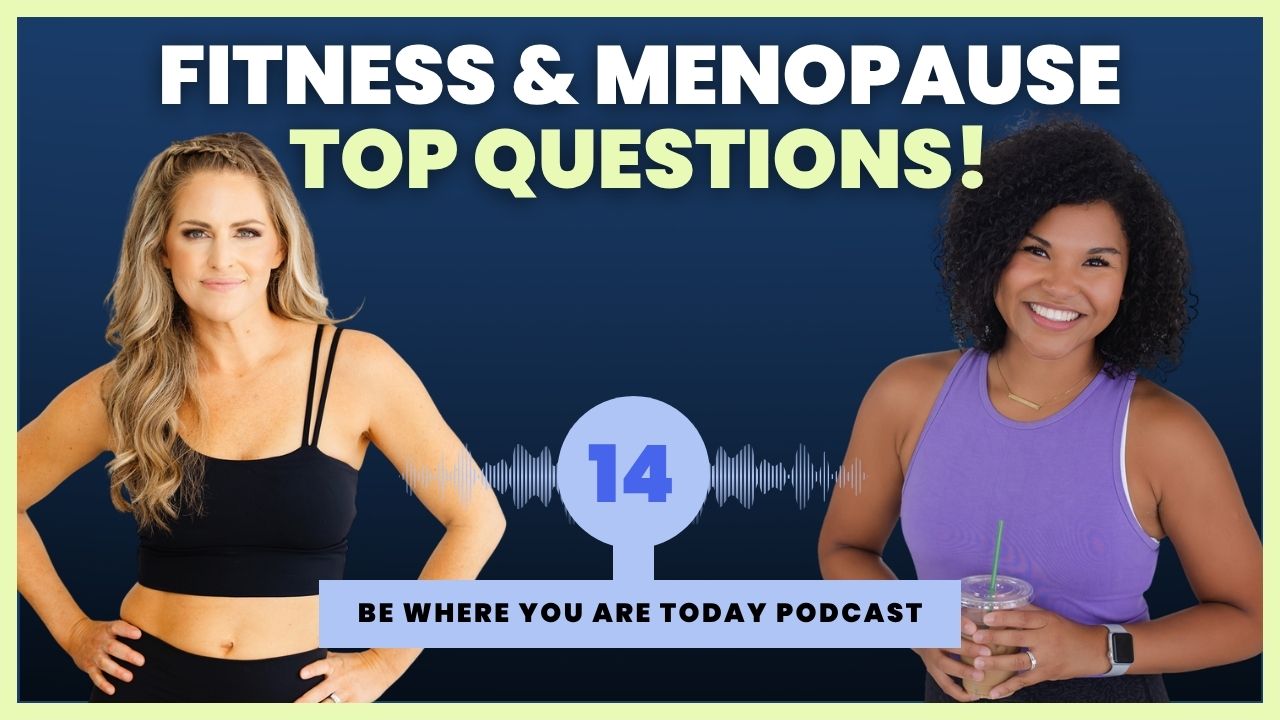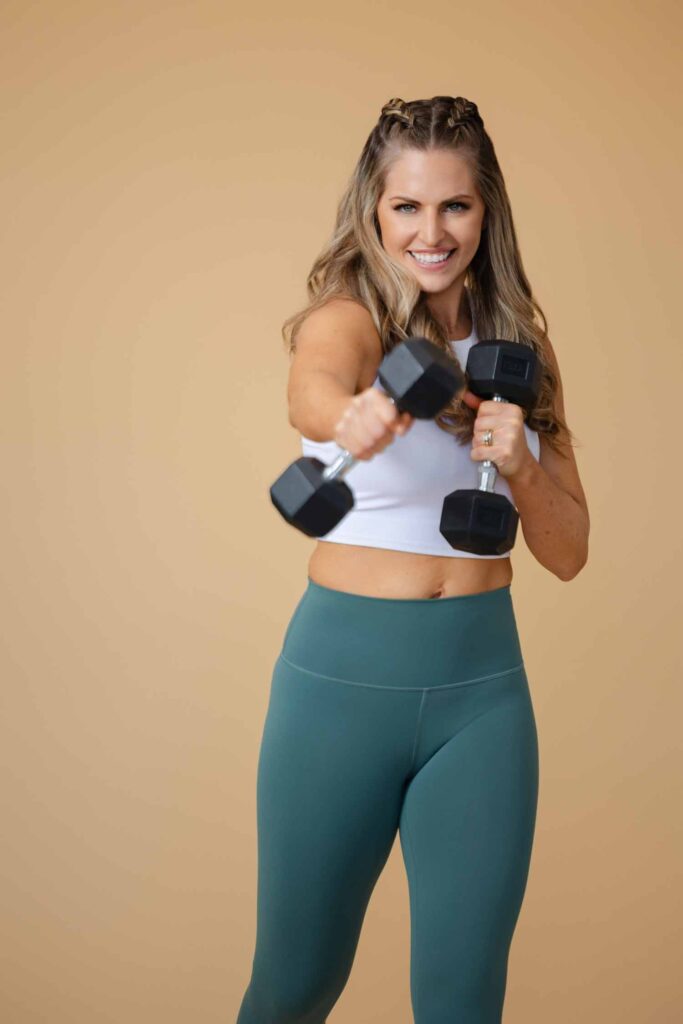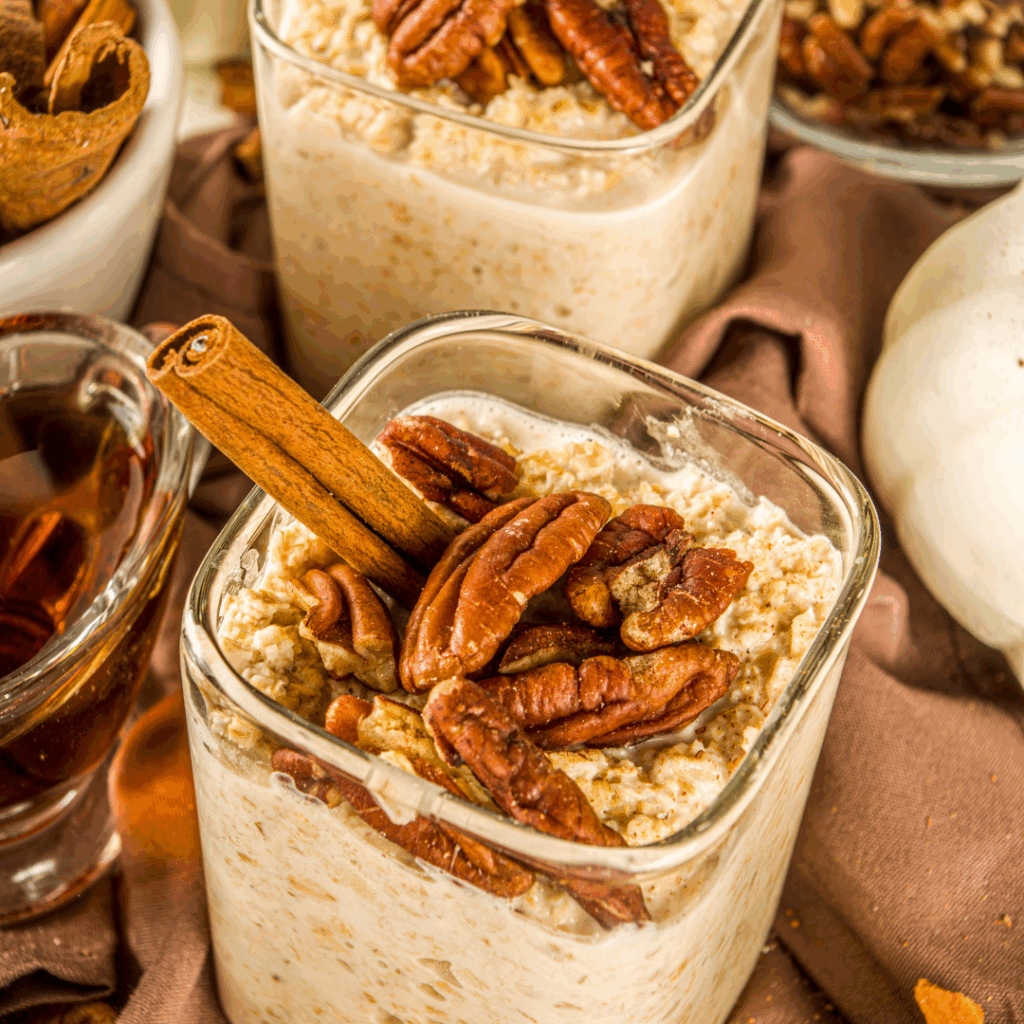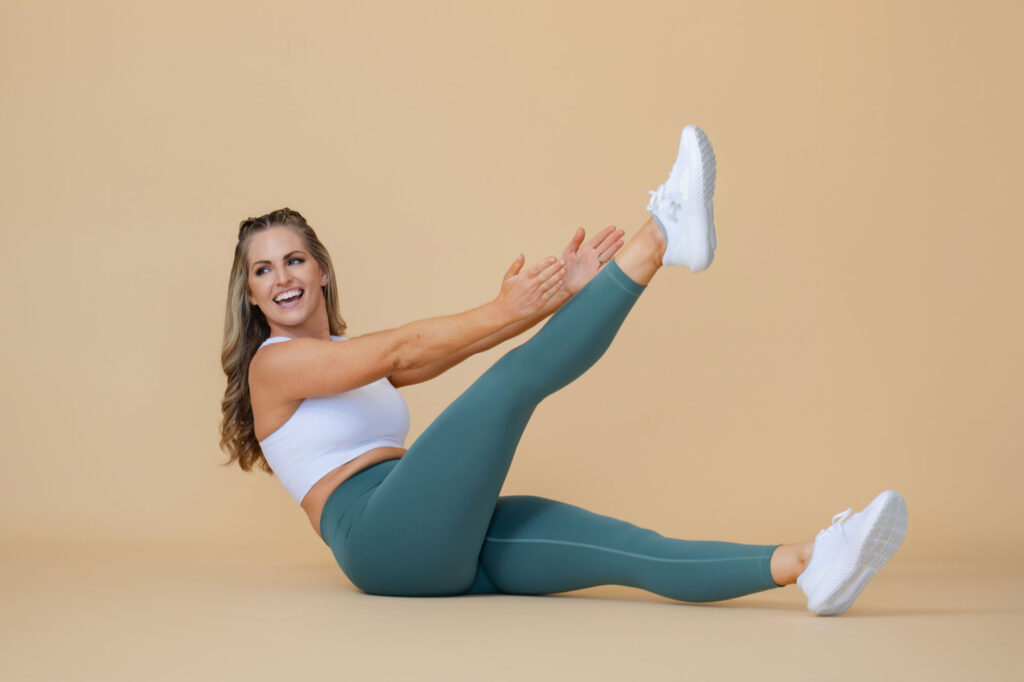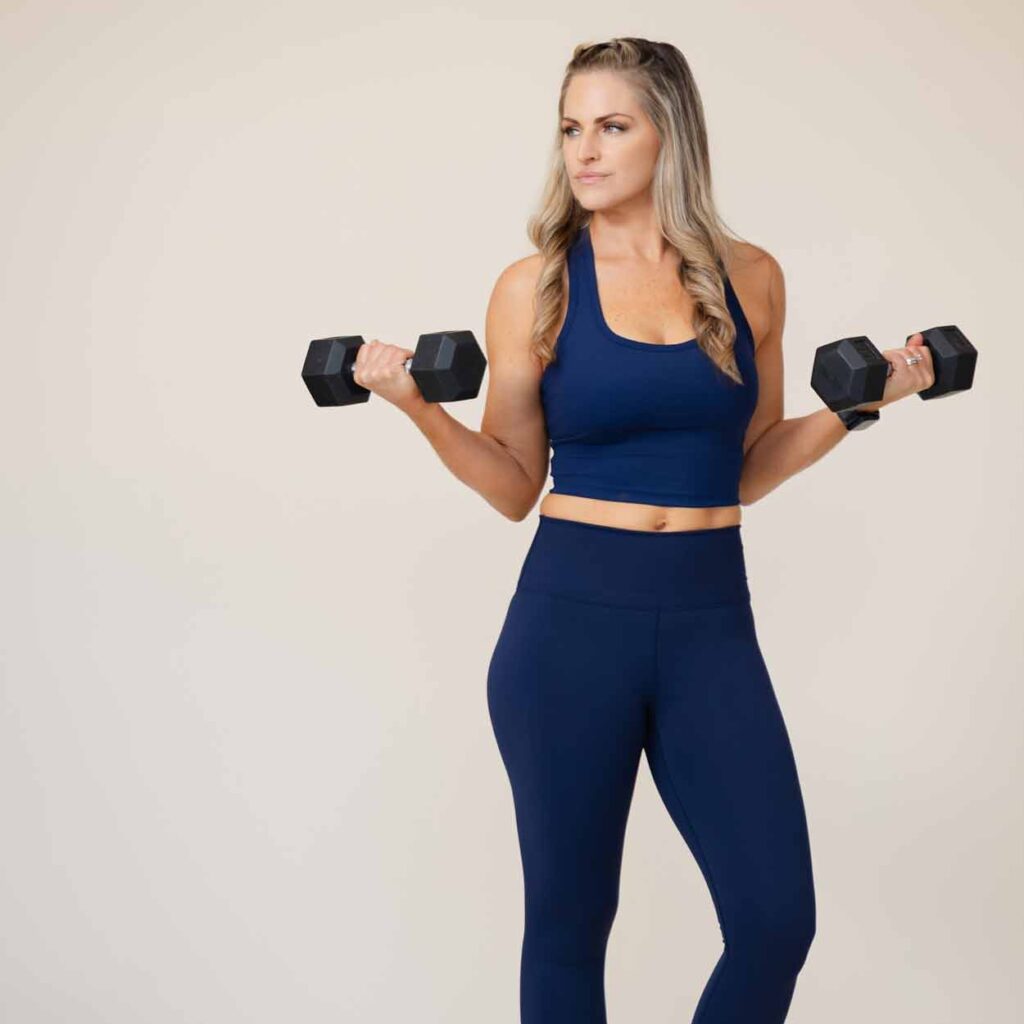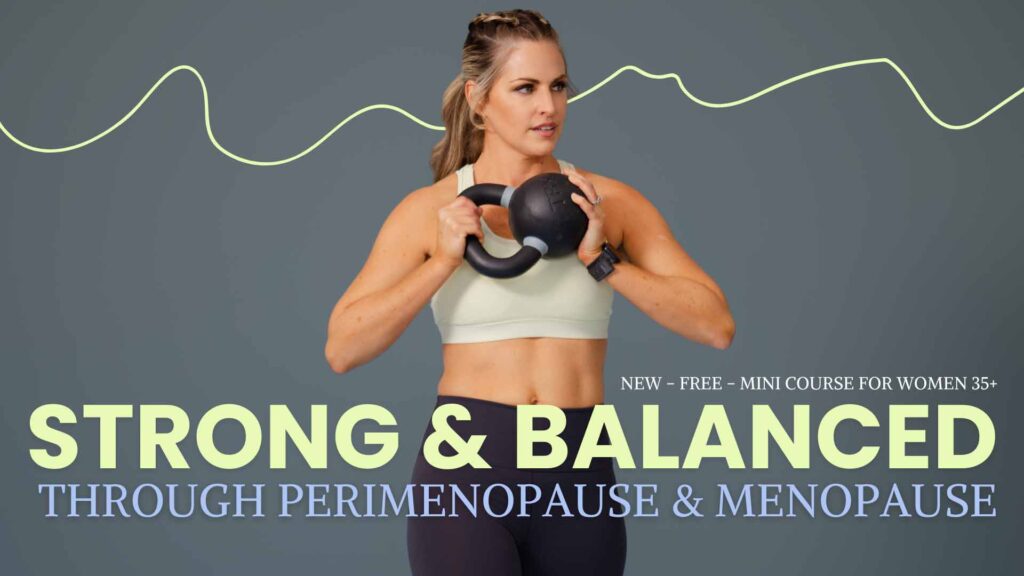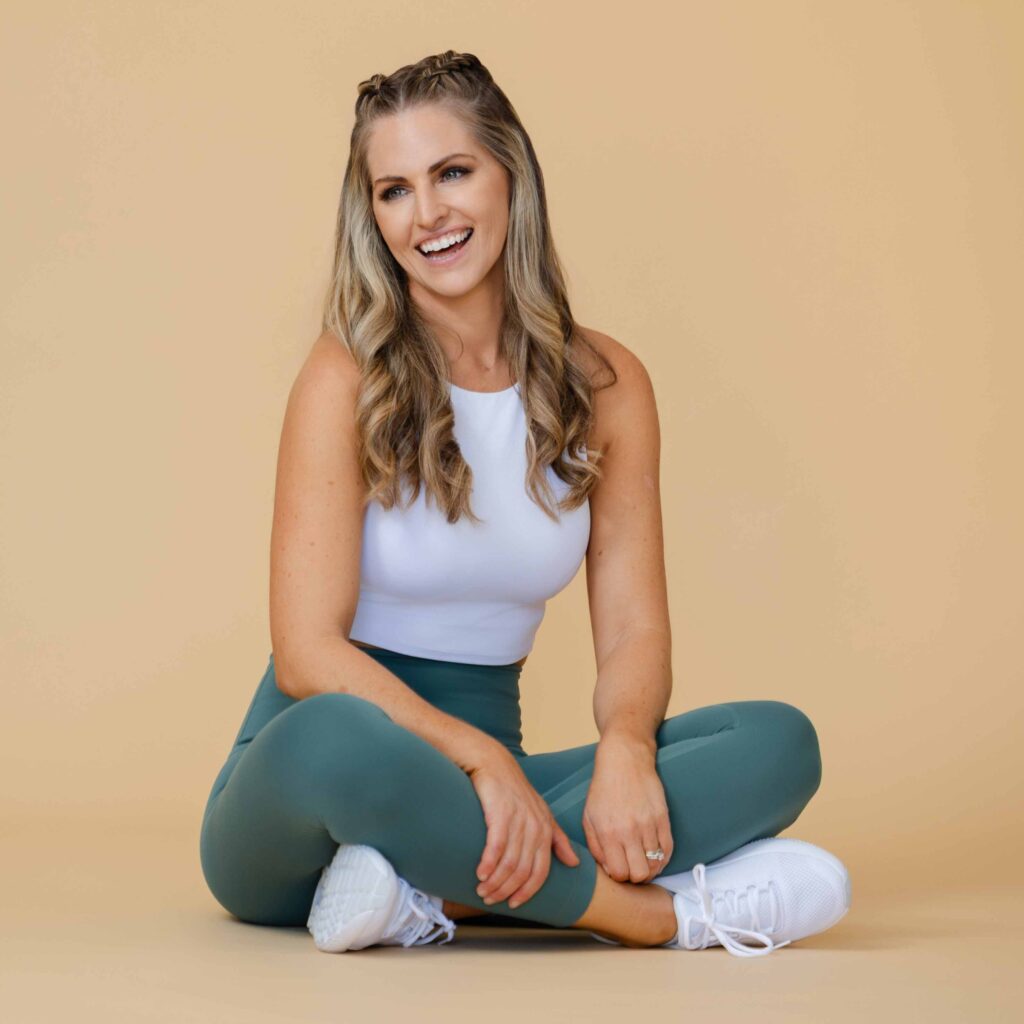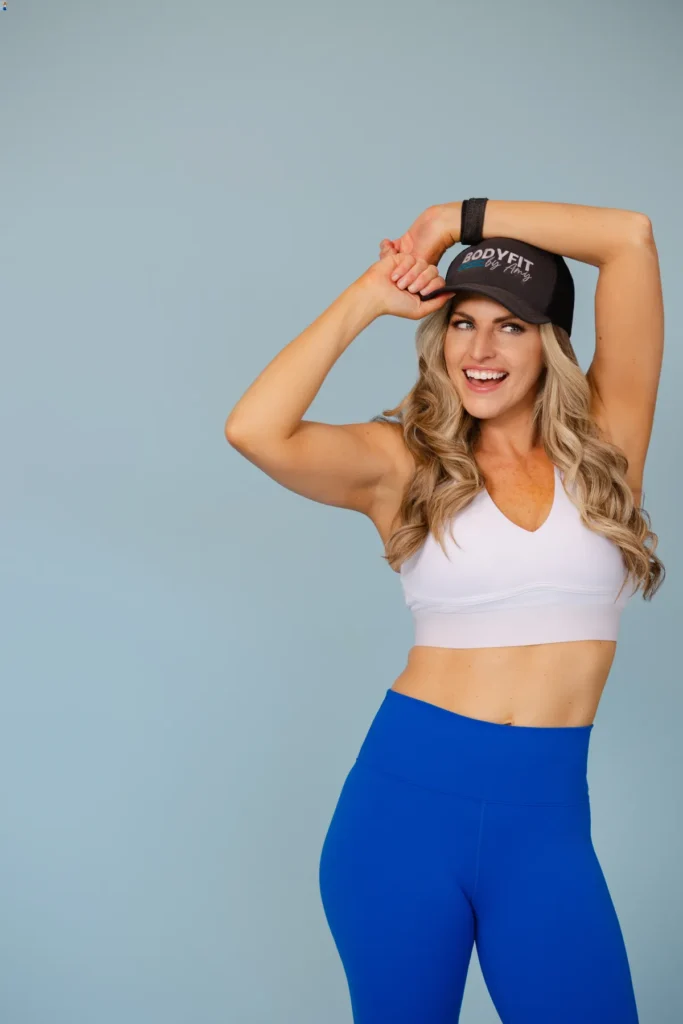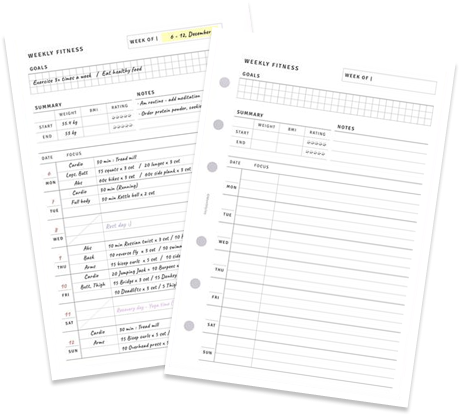ntroduction
Welcome to our blog! Today we dive deep into the intersection of fitness and menopause. Hosted by Amy from BodyFit by Amy, we aim to connect you with professionals in the fitness and nutrition space to navigate the changes and challenges of perimenopause and beyond. In this post, we’re thrilled to have insights from Vivian Schemper, our registered dietitian nutritionist, addressing some of the most common fitness questions surrounding menopause.
This blog is written from excerps from our podcast “Be Where You Are Today.” To listen to the full episode or find other topics in the fitness and nutrition space go HERE or wherever you listen to your podcasts.
Understanding the Body’s Changing Landscape
One of the pressing questions we frequently encounter is: Why does menopause bring about such significant changes? As Amy explains, the perimenopause and menopause phases introduce hormonal shifts, largely characterized by declining estrogen, progesterone, and testosterone levels. These hormones are integral to maintaining lean muscle mass and regulating metabolism. The changes might prompt unexpected weight gain and shifts in body composition, underscoring the importance of specific fitness strategies during this life stage.
Ditching the Scale
Vivian brings up an interesting point regarding how many women rely on scales as a measure of progress. Amy emphasizes the pitfalls of this approach, advocating for methods like DEXA scans and measurements that more accurately reflect body composition changes. The focus shifts from numbers to how one feels, reinforcing a holistic view of fitness and health.
Embracing Challenging Workouts
As menopause alters the hormonal landscape, adjusting workout routines becomes crucial. Strength training emerges as a key player, with Amy stressing the importance of lifting heavier weights to support muscle mass and bone density. It’s not just about the physical strength but also leveraging exercise-induced hormone releases that aid in fat reduction and overall health.
Cardio: Finding the Right Balance
Another buzzword in the fitness space is “Zone Two” cardio, which involves lower intensity workouts that allow for conversation while exercising. While it has its place, Amy underscores the necessity of balancing various intensities. High-Intensity Interval Training (HIIT) and Sprint Interval Training (SIT) also become essential, promoting efficiency and adaptability in workouts.
The Trending Weighted Vests
Weighted vests have become quite the trend, especially among those new to traditional strength training. Amy advises caution, stressing that while they can be beneficial, they cannot replace traditional strength training. It’s vital to understand the balance and ensure the exercise regimen supports wearing a weighted vest without inducing harm.
Targeting the ‘Menopause Belly’
Many women express concern over the accumulation of belly fat during menopause. Amy advises that spot training isn’t feasible; instead, focusing on overall strength training and balanced nutrition plays a more pivotal role. It’s about building a program that integrates various exercise forms, not just fixating on cardio or crunches.
Amy’s Personal Journey
Amy shares her own experiences as she navigates her mid-forties, echoing the challenges many face as they enter perimenopause. Her journey involves lifting heavier weights, emphasizing recovery, and rethinking her approach to fitness—showing that fitness professionals, too, walk alongside those they guide.
Conclusion
As Amy wraps up this insightful dialogue, the message is clear—embracing change, finding joy in movement, and focusing on a balanced, thoughtful approach to fitness and nutrition is the key to thriving in life’s later stages. Show up, keep moving, and be where you are today. Your journey is unique, and together we can navigate these changes with strength and resilience.
